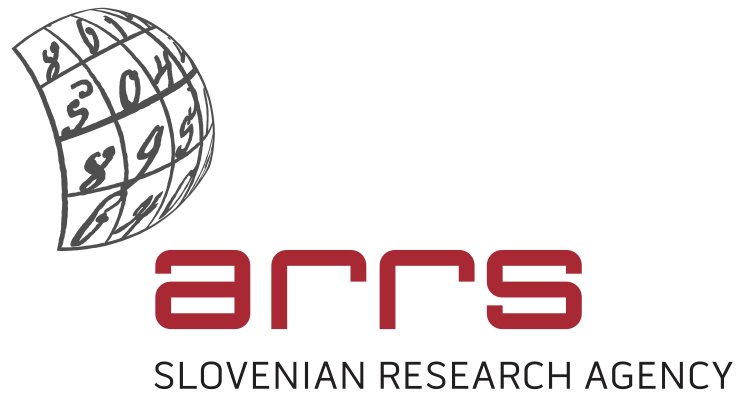Carbon Dioxide Reduction Catalysed by Single Atom Catalyst for the Production of Value-Added Chemicals
Project content and funding
The path towards CO2 neutrality needs to go over the reduction of CO2 emissions. Consequently, techniques as on-site CO2 capture and CO2 conversion to fuels and chemicals are of extreme interest. Due to the high energy that is required for activation of CO2 molecule a product-selective and robust catalyst has to be developed and applied. Of particular interest is the formation of C2+ products (ethanol, ethane, ethylene, ethylene glycol…) that are carrying higher energy density and higher economic value compared to the C1 products (methanol, formic acid, methane…). Until now, only the methanol production from CO2 has reached technological maturity with a sufficient selectivity. Whereas, the C2+ products are usually formed with low reaction yields mostly as side products of the C1 products. A significant breakthrough in the selectivity of products from the CO2 reduction can be achieved only by understanding the reaction mechanisms, surface structures, and active sites.
To promote the C-C bond formation during CO2 reduction and, therefore, favor the formation of the product with a higher economic value, this project will address the development of a product-selective heterogeneous catalyst. The objective of the project is to develop a catalyst for a single-atom-catalysis of CO2 reduction to C-C bond containing products. In this scope, we will develop a composite catalyst comprised of uniformly dispersed single atoms or metallic clusters on a modified metal oxide support. The support, modified by a porous organic framework (COF), will have the ability to confine CO2 gas and reaction intermediates, forcing the C-C bond formation. To identify reaction pathways that are leading towards C-C bond formation, this project will deliver a comprehensive set of experimental results on the reactant and intermediate interactions with the catalyst active sites and the catalyst support.
The catalyst development will be supported by various advanced materials characterization techniques. The dispersion of the Cu metal on metal oxide surfaces will be characterized by SEM and TEM as well as by AFM and STM. The chemical state and coordination environment will be characterized by the use of photoelectron spectroscopy and X-ray absorption spectroscopy with synchrotron radiation. The two-dimensional infrared spectroscopy (2D IR) spectroscopy will be employed to identify the intermediates at the catalyst surface as well as their interactions with different parts of the catalyst surface (oxide/metal/functional group of COF). This information can be directly related to the formation and dissociation of the chemical bonds, making it possible to determine the impact of the interface on inter- and intra-molecular dynamics of the adsorbed species. Together with the identification of the reaction products it will allow us to construct the reaction pathways towards multi-carbon products.
Project duration: 1.9.2020 – 31.08.2023
Funding: Project is funded by Slovenian Research Agency (Project number: J2-2498).
Project team
- Doc. Dr. Andraž Mavrič (head) SICRIS
- Prof. Dr. Matjaž Valant SICRIS
- Prof. Dr. Mattia Fanetti SICRIS
- Prof. Dr. Sandra Gardonio SICRIS
Project phases
Workpackage 1: Development of active support for the CO2 reduction catalyst with the ability to confine CO2 gas and reaction intermediate.
- Studies of surface defect formation [in progress]
- Studies of Cu metal dispersion [in progress]
- Studies of stability of SAC
- Evaluation of Cu SAC/metal oxide supported catalyst for CO2 reduction
- Synthesis of functional COF [done]
- Application of COF to the catalyst surface [done]
- Evaluation of Cu SAC/COF for CO2 electro-reduction [in progress]
Workpackage 2: It will deliver a comprehensive set of experimental results on the reactant (intermediate) interactions with the catalyst active sites and catalyst support.
- Identification of the origin stability of Cu SAC and interaction of CO2 gas with Cu/metal oxide
- Electronic structure of dispersed Cu
- Interaction of CO2 with Cu/metal oxide [in progress]
- Interaction of CO2 within the pores of COF [in progress]
- Identification of CO2 reduction intermediates
Project results
The oxygen evolution reaction (OER) is a very important half-reaction providing abundant electrons for electrochemical reduction reactions, such as nitrogen reduction reaction (NRR), carbon dioxide reaction (CO2RR), and hydrogen evolution reaction (HER). The development of these crucial reactions makes it of extreme importance for the world’s transition toward a “post-carbon society” by emphasizing the context of “carbon dioxide utilization” and “hydrogen economy”. Thus far the CO2RR has made great progress. In recent years, owing to the rapid development of the gas diffusion electrodes, the CO2 electrocatalysis to hydrocarbons has achieved an industrial-scale activity at 1 A cm-2 in a 7 M KOH electrolyte. It is becoming common for the CO2RR systems to get a current density above 100 mA cm-2. Thus, the rapid development of the cathodes requires a reciprocal improvement of the anodes. Currently, the transition metal layered double hydroxides (LDHs) are proven as efficient alkaline oxygen evolution catalysts and demonstrate promising current density. We reviewed the current advances in achieving activity enhancement by tuning the composition, structure, and morphology of LDHs and present the degradation mechanism during the electrolysis under oxidative alkaline environments, long-term operation, and voltage fluctuations. We present the state-of-the-art approaches to stabilize the overall performance of LDHs for water oxidation and provide an outlook in this field.
Atomic layer deposition (ALD) offers new opportunities for the fabrication of metal oxide thin films due to the monolayer-by-monolayer deposition approach, allowing the preparation of conformal films with precisely controlled thickness and composition. As the ALD instruments are becoming widely accessible, we made an overview of the ALD applications to prepare thin films in the field of catalysis driven by photoelectrochemistry: the deposition of semiconductors onto flat and nano-textured substrates, the deposition of ultrathin interlayers to ease charge transport by energy band alignment and surface states passivation, the deposition of corrosion protection layers, the possibilities for high catalyst dispersion.

